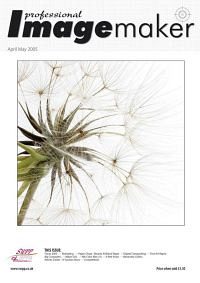articles/Cameras/kodakdcs-page5
KODAK DCSPro14n Big Chips for High Rollers - part 5 of 1 2 3 4 5
by Mike McNamee Published 01/04/2005

Kodak Photo Desk
Kodak Photo Desk proved to be a simple and accurate way to bring perfection to your colour rendering. The RAW file acts like a negative, from which many variants may be created. The Kodak Looks (see above) provide simple ways of bending your colours for a more pleasing result for a variety of situations. The work flow is easy to set up and use although the large files which the camera is capable of do take a itlle longer to process than smaller rivals. Up to 2 stops of under or over exposure may be recovered from the high dynamic range of the CMOS chip. Noise Reduction, Moire Removal, and Sharpening may be controlled from Photo Desk and a close view is available as shown in the screen grab below. The Exif data may also be displayed. Preferences may be set up for default colour spaces, file handling and preferred image editing application.
CONCLUSIONS
This camera sits squarely in the social, wedding and commercial sector. It is better at low ISO, it has the ability to cope better with "blow-out" of the brides dress and you get back the ability to lose the back ground with a wide aperture.
The PhotoDesk software is the jewel in the crown - it simplifies the handling of large numbers of files and really does the business on colour.
After an indifferent start with the Lens Calibration issues we rapidly grew to like this camera. It is still being refined, but as it stands it makes a good generalpurpose photographers' tool. It is not intended for Sport and Action photography, it is a little slow working for that, also note that your legacy long telephotos might not fit the body. Contrary to the findings of some reviewers, we found the speed of operation in the studio OK. It is easy to get carried away with the "free at the time of taking" concept of digital and then have to pay in full at the editing phase when you are overwhelmed by too many images, high storage demands and extended batch processing routines - make every shot count even if it appears to be free! In the studio it was nice to get back the shallow depth of field larger chip. Here the relatively slow ISO capability of the DCS 14n is useful. Cameras with faster minimum rating often struggle to cope with studio flash output, even at 1/32nd power.
At the file size available the DCS 14n can produce a 24" by 16" inkjet print without even having to interpolate. A 40" inkjet print could easily be made without too much influence on quality. That same file size will comfortably stretch to a double A4 magazine spread. This alone moves the digital SLR into new territory compared to the 4/3" standard cameras. You pay a heavy premium for the luxury; the DCS 14n costs £3,595 ex VAT. For the investment of £899 on the new Nikkor 12-24mm plus a D1 or D100 or Fuji S2 you will still be under the cost of the DCS14n and a lens and you will have got your wide angle capability back - it just depends whether your client wants big files, big pictures or perhaps both. At least the DCS14n has the flexibility to downsize to 6MP. Once you have made your investment you will have a solid tool at your disposal which is high resolution and easy to obtain quality images from. If the flexibility of RAW file format and the ability to recover a couple of stops of exposure miscalculation saves your bacon one day in the future it will seem like an even better investment.
Please Note:
There is more than one page for this Article.
You are currently on page 5
- KODAK DCSPro14n Big Chips for High
Rollers page 1
- KODAK DCSPro14n Big Chips for High
Rollers page 2
- KODAK DCSPro14n Big Chips for High
Rollers page 3
- KODAK DCSPro14n Big Chips for High
Rollers page 4
- KODAK DCSPro14n Big Chips for High
Rollers page 5
1st Published 01/04/2005
last update 09/12/2022 14:55:34
More Cameras Articles
There are 0 days to get ready for The Society of Photographers Convention and Trade Show at The Novotel London West, Hammersmith ...
which starts on Wednesday 15th January 2025





